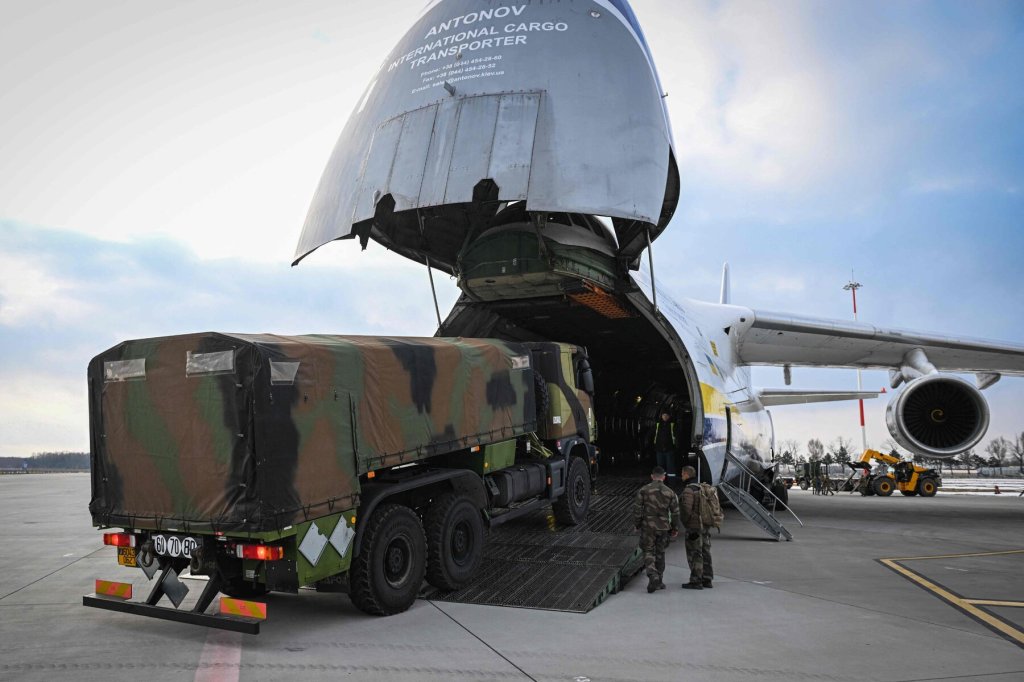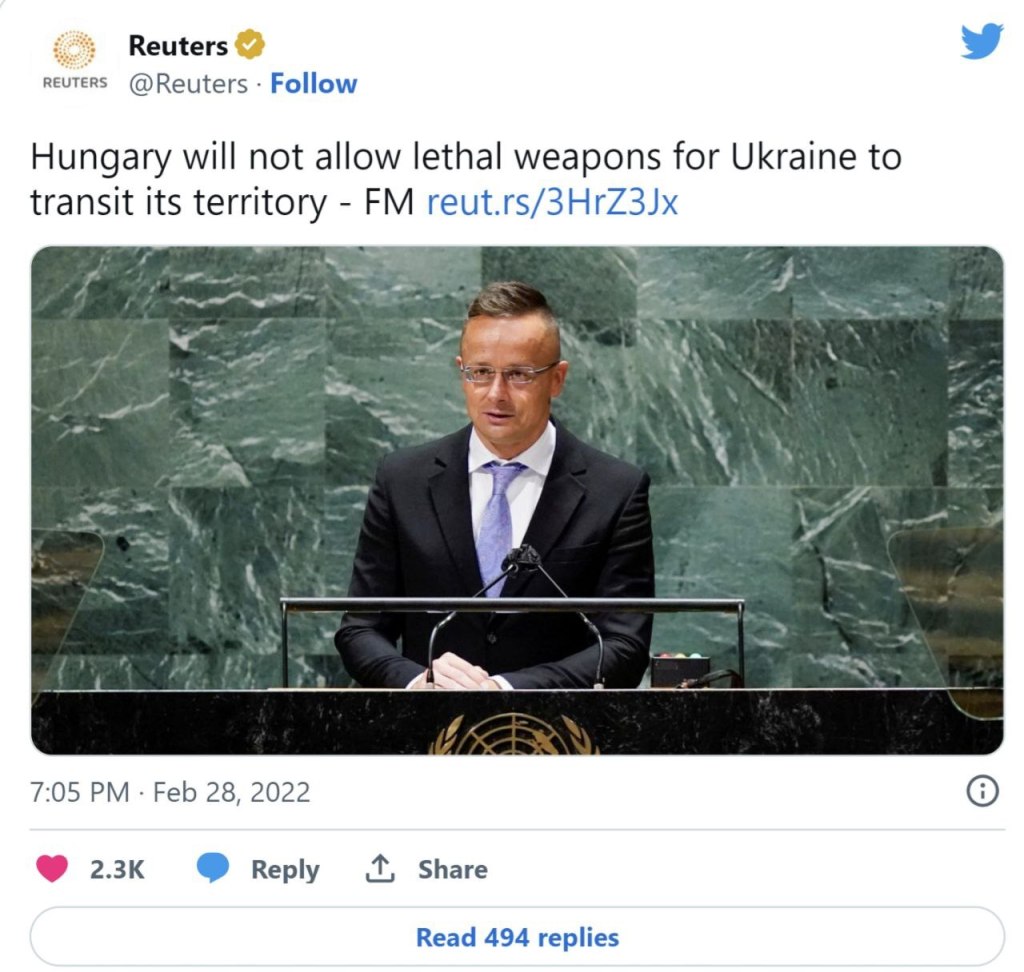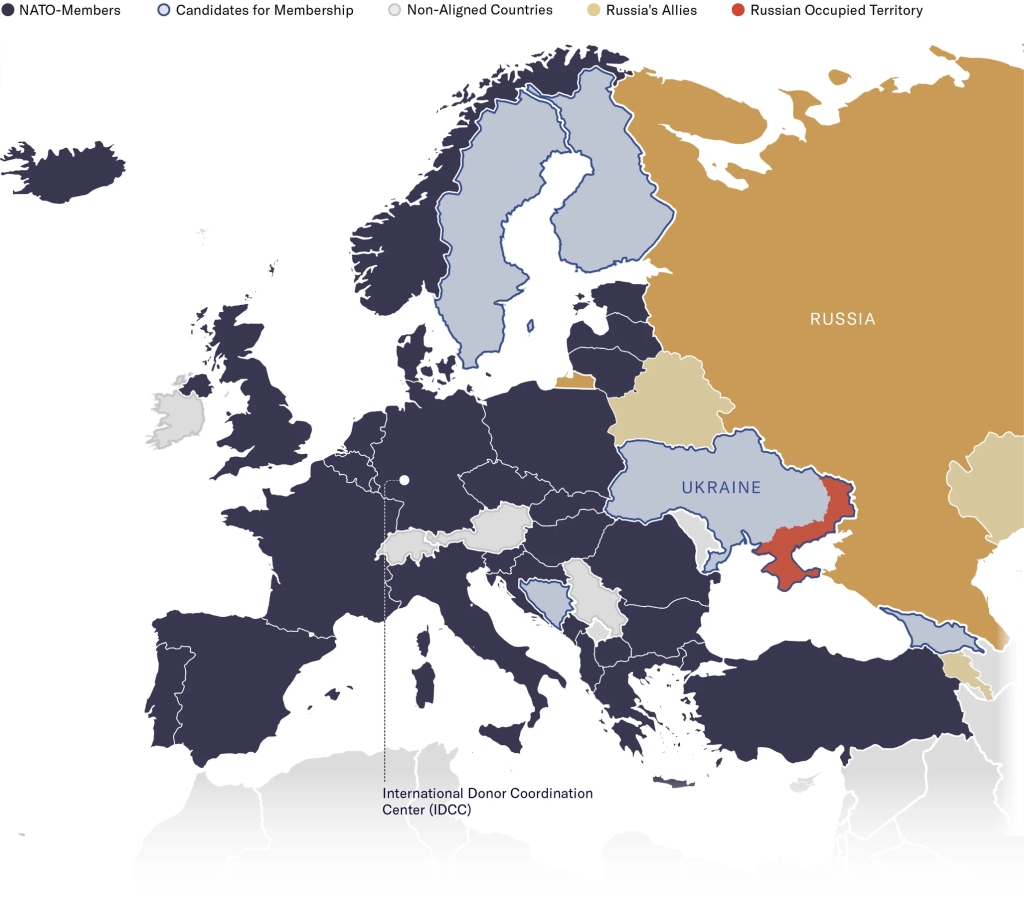The logistical challenges

Up until now, Western military aid has been transported to Ukraine either by land or air, depending on the weaponry involved. However, with Russian fighter jets controlling the airspace over Ukraine, there is a growing concern that these shipments could be intercepted through airstrikes or missile strikes.
Gustav Gressel, a defense policy expert on Eastern Europe with the European Council on Foreign Relations think tank, highlighted that the Russian forces could monitor the routes and transportation methods used by the aid shipments. This situation has now shifted the focus to Poland, which shares a 535-kilometer (332-mile) border with Ukraine and has been a key transit point for the US Army’s equipment and forces. Furthermore, with Hungary’s rejection to allow lethal arms to pass through its territory, the responsibility falls more heavily on Poland.

To ensure the smooth delivery of military aid to Ukraine, an efficient system is required. This system is managed from a control center located far from the conflict zones in eastern Ukraine. However, this control center is critical to the outcome of the war, as the side with superior weaponry and supplies is likely to emerge victorious.
The control center is situated in a large hall at Clay Kaserne, an American base near Wiesbaden in Germany. Military representatives from 17 countries work together daily to coordinate supply lists, inventories, transportation plans, and maps. Officers in military uniforms scurry past one another, conversing in a mixture of British, American, and continental European English, as well as some Ukrainian phrases.
The primary tool used in this control center is the computer. Military representatives sit behind their laptops on a multi-tiered grandstand, communicating securely with armed forces from 41 countries that provide military assistance to Ukraine. These countries include not only NATO member states, but also other partners like Australia, New Zealand, Sweden, and Finland.
The Logistic Center for Deliveries of Weapons into Ukraine

The first mile
U.S. military equipment needed by Ukraine is stored in bases across Europe. Once the weapons and equipment are retrieved from these U.S. stocks, they will be transported via air, truck, or rail across the “first mile.” This distance can range from 600 to 700 miles to NATO territory along the western or southwestern border of Ukraine, including countries like Poland, Slovakia, Hungary, and Romania.
In order to maximize security and prevent Russia from predicting the destination of the equipment, movements along the first mile within NATO territory must be concealed. This first destination is known as a “staging area” and will likely be an armory or ordnance depot located on a NATO base to ensure the security of the equipment before it is transported into Ukraine.
The decision to use a single staging area or multiple staging areas is a critical strategic decision that depends on various factors such as the location of the equipment within Ukraine, the condition of roads and bridges, enemy activity, the origin of the equipment, and operational security. A single staging area is simpler to plan and execute, but it creates significant risk as Russia can easily disrupt the resupply mission by attacking one area across the border inside Ukraine.
Alternatively, using multiple staging areas is more complex to plan and execute but reduces the risk of a Russian disruption on resupply as there would be many locations for the Russians to target.
The middle mile
After the decision for the staging area is made, plans are developed to transfer the material to Ukraine’s military. However, operational security becomes more critical during the middle mile. NATO’s refusal to establish a no-fly zone allows Russia to maintain air superiority over Ukraine, which means Ukraine cannot transport the supplies by air. This forces them to use vehicle convoys to travel from the western border to the next location in the supply chain. Deploying one large convoy is too risky, so instead, the weapons and equipment will likely need to be broken down into smaller shipments and transported in multiple convoys.
The final mile
The weapons and equipment will be transferred to the final staging areas within major cities once they reach the ultimate staging areas. These shipments will be separated into smaller quantities for further distribution to the soldiers fighting on the front lines. However, this last leg of transportation is more dangerous as it involves Russian aerial and ground attacks. To ensure safety, the logistics units traveling the final mile will require protection, including small arms and anti-tank weapons.
When the military equipment finally reaches the combat units at the front lines, it will be distributed to individual soldiers. Although the supply chain for military aid to Ukraine has some conceptual similarities to that of an e-commerce supply chain in the U.S., the stakes are much higher. Any missed delivery could mean that a sovereign nation may not be able to defend itself against an invading force in the long term.
References: Kiel Working Papers, 2218 – The Ukraine Support Tracker: Which countries help Ukraine and how?
FACTORS IMPACTING ON THE OPERATION
OF THE LOGISTICS SUPPLY SYSTEM OF THE UKRAINIAN
ARMED FORCES IN THE CONDITIONS OF WAR – Випуск # 42 / 2022 – Tesnikov Oleksandr – National Academy of the National Guard of Ukraine; Fursova Viktoriya – National Aerospace University named after M. Zhukovsky “Kharkiv Aviation Institute”
European Cousil Report – Think Tank Review 14 March 2023 consilium.europa.eu/en/documents-publications/library/library-blog/posts/think-tank-reports-on-the-invasion-of-ukraine/
Defence-ua.com https://defence-ua.com/army_and_war/jake_same_ozbrojennja_i_v_jakij_kilkosti_otrimuje_ukrajina_vid_sojuznikiv-8521.html